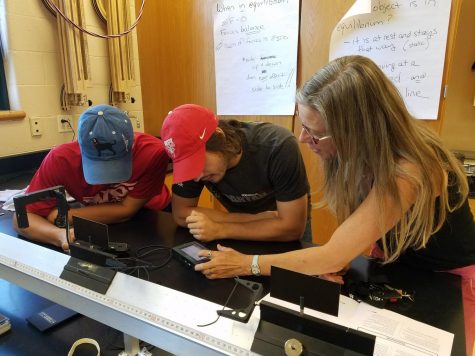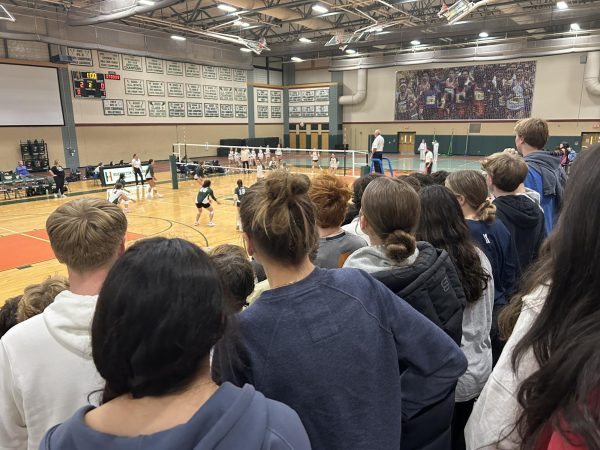Failing Test Grades in AP Physics Boosted Through “Curving”
Students new to the high school may be surprised to learn that in some classes, a 50% on a test can be a passing grade. This is because of grade curves, a grading method used by more difficult courses to boost grades.
“My last test would have been somewhere in the 60’s,” Danaceau said. “With the curve, it was an 87.”
Senior Zach Danaceau says AP Physics is the hardest course he has taken in high school.
“If we didn’t have the curve everyone would be getting F’s on their tests,” said Olivia Ozmun, another AP Physics student.
There are different kinds of curves teachers use. In AP Physics, a student’s score is put into an algorithm, which calculates the new grade.
“Your personal grade is boosted through a set formula that does not change no matter what [other] people got on the test,” Ozmun said. “It just helps everyone.”
The formula involves treating the original grade as a decimal, then taking the square root of that. So an 80% would be 0.8. The square root of that would be .89, so an 80% on a test is automatically boosted to an 89%.
Calculus at HHS uses a simpler curve, in which grades low or high receive an additional 10 points. “It makes a B an A and an A- an A+,” Danaceau said.
While students tend to see curves as a way to save their GPA’s, Elizabeth Petruska, who taught AP Physics last year, explains a different reason why the course has a curve.

“For certain courses, i.e. Physics, we have maybe five laws that govern every known phenomenon in the universe,” said Petruska. “So if you are going to test people on those 5 laws, you’re not just testing the five laws, [but] a depth of knowledge.”
“If they’re getting one hundred, or close to a hundred, you’re saying they have hit the bottom of the lake,” said Petruska. “In a certain curriculum that may be so, for instance, once you know algebra, you can do algebra on everything, so you can get 100%.”
Without a curve, Petruska thinks 100% in a physics class would mean mastery and complete understanding of the subject. Knowing 100% of Precalculus, for example, may be possible in high school. Knowing 100% of physics would be something different. “A 60% for me would be huge,” Petruska said. “That’s assuming that, if its an AP course, that your undergraduate level is a 60%, which means your masters level is what, an 80%? And your PhD is 100%? It’s a complicated thing.”
With a curve, a student doesn’t have to be a physics genius in order to get a fair grade.









